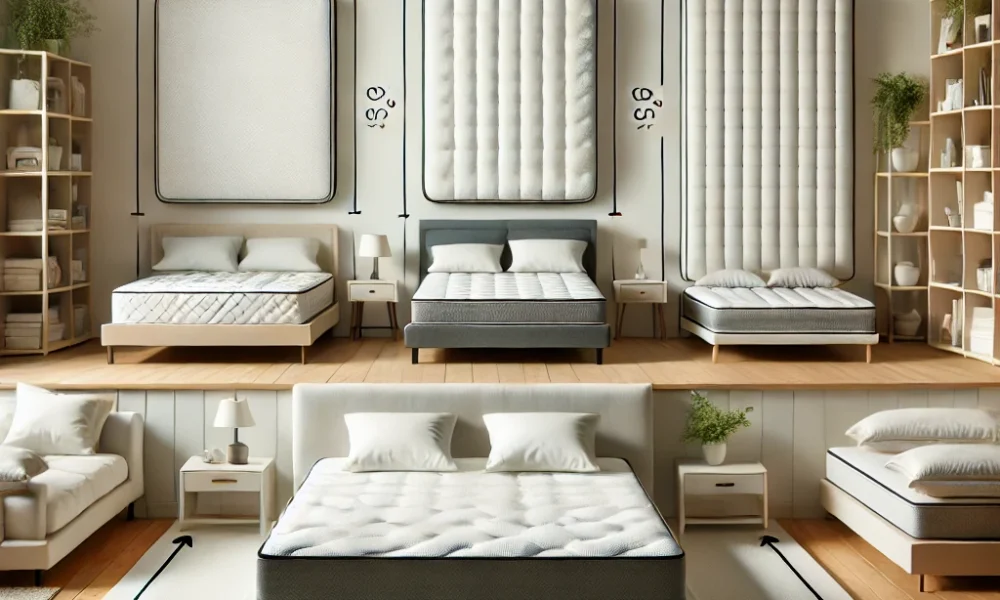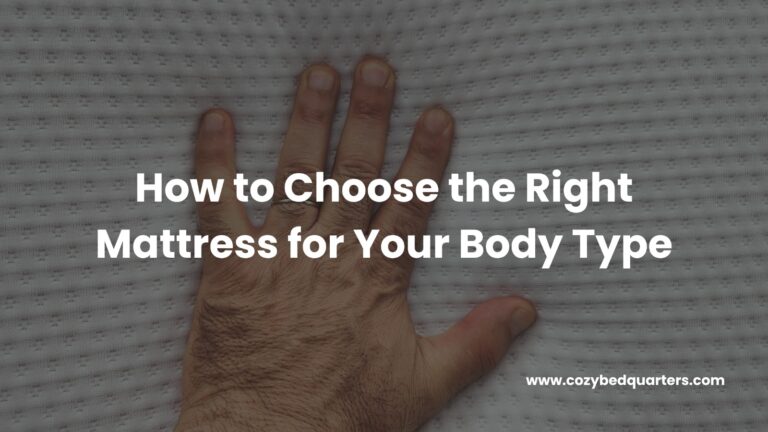Bed Width Mattress Fit
Bed Width Mattress Fit is the key to achieving optimal comfort, proper support, and a cohesive bedroom style. By understanding standard bed dimensions, mattress materials, and frame compatibility, you can ensure a restful and stylish sleep environment.
Key Takeaways
The key factors for achieving the perfect Bed Width Mattress Fit include matching the mattress width to the frame, choosing the right thickness, and accounting for room space. These tips ensure better comfort, durability, and bedroom aesthetics.
- Bed width directly impacts mattress comfort, longevity, and room aesthetics.
- Choosing the right mattress thickness and material enhances support and sleep quality.
- Proper measurements prevent fitting issues like gaps or overhangs.
Understand Standard Bed Widths
Standard bed widths determine how well your mattress will fit and function. A mattress that matches the frame size eliminates gaps, provides balanced support, and enhances bedroom design.
When it comes to Bed Width Mattress Fit, knowing standard bed dimensions is crucial. A mattress that perfectly aligns with your bed frame ensures a balanced look and prevents gaps or overhangs that affect comfort and support. For a detailed breakdown, check the Sleep Foundation mattress size guide.
| Bed Size | Width (inches) | Length (inches) | Ideal Mattress Fit |
|---|---|---|---|
| Twin | 38 | 75 | Single Sleepers, Kids |
| Twin XL | 38 | 80 | Taller Teens, Dorm Rooms |
| Full | 54 | 75 | Solo Sleepers, Guest Rooms |
| Queen | 60 | 80 | Couples, Guest Rooms |
| King | 76 | 80 | Families, Luxury Bedrooms |
| California King | 72 | 84 | Tall Sleepers, Spacious Rooms |
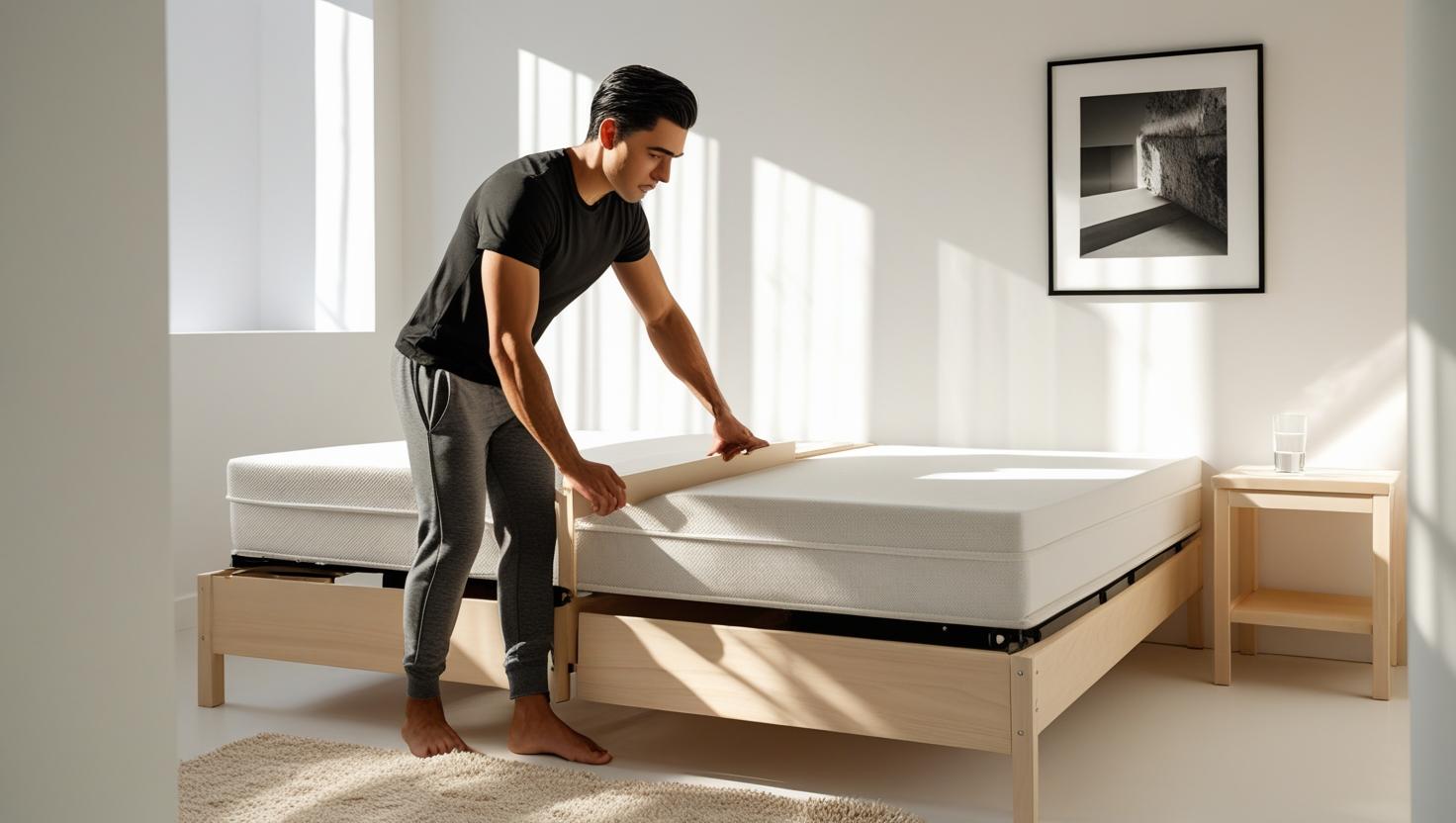
Consider Mattress Thickness
The thickness of a mattress affects both comfort and the overall look of your bed. Choosing the right thickness ensures ergonomic comfort while maintaining proper bed height and style.
Mattress thickness influences both comfort and the overall height of your bed. In terms of Bed Width Mattress Fit, balancing width and thickness ensures ergonomic comfort and easy access to the bed.
- Standard Thickness: 8–12 inches for traditional comfort.
- Luxury Thickness: 14–16 inches for plush sleeping experience.
- Low Profile: 6–8 inches, ideal for bunk beds or trundle setups.
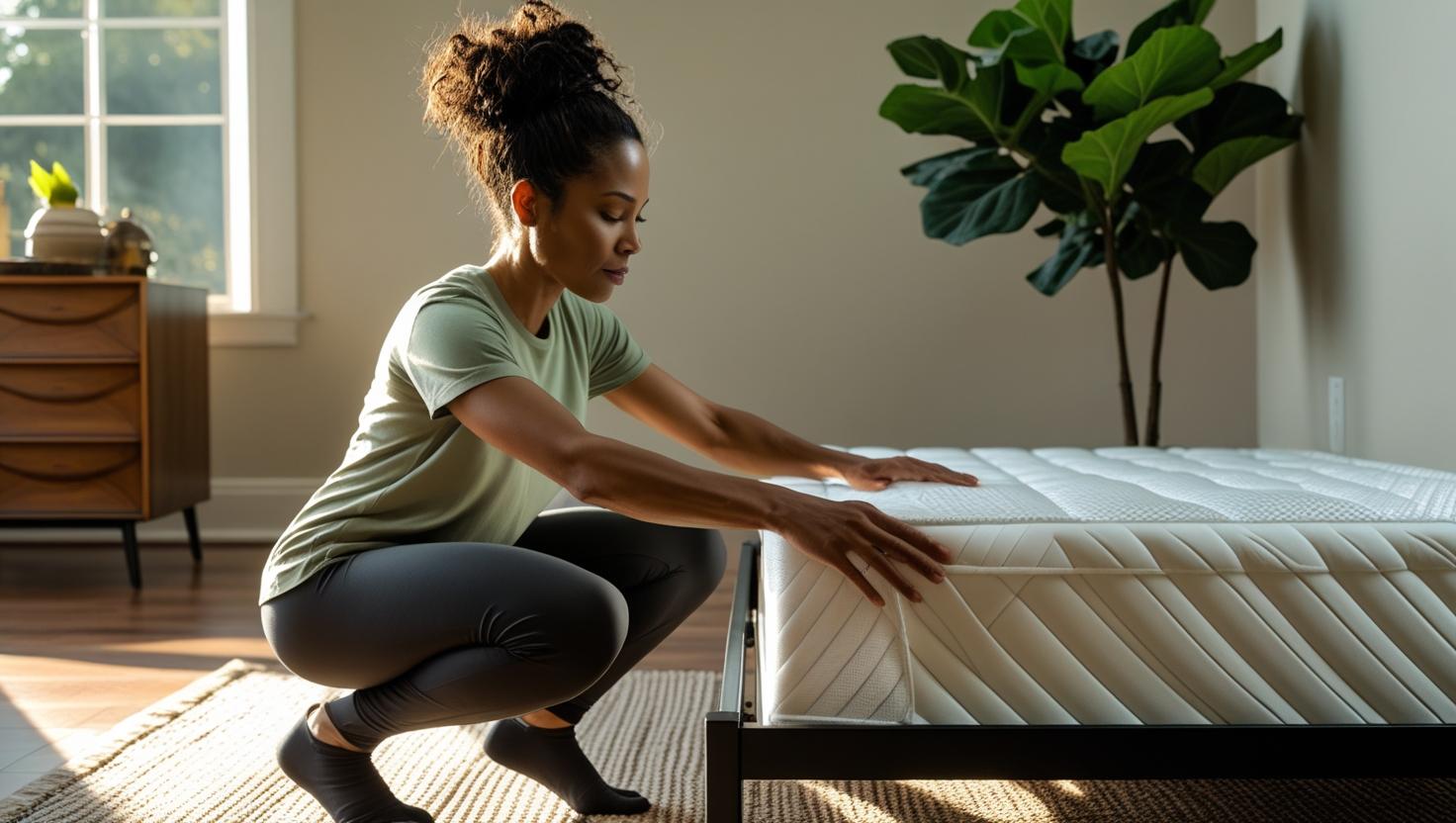
Account for Bed Frames and Foundations
Your bed frame is crucial for a perfect Bed Width Mattress Fit. A well-matched frame ensures stability, prevents sagging, and enhances mattress longevity.
Your bed frame plays a major role in achieving the ideal Bed Width Mattress Fit. A mismatch between the frame and mattress can lead to instability, sagging, and reduced durability.
- Platform Beds: Perfect for mattresses without a box spring, offering a modern look.
- Slatted Frames: Ensure slats are spaced closely to avoid sagging.
- Adjustable Bases: Pair well with memory foam or latex mattresses for flexibility.
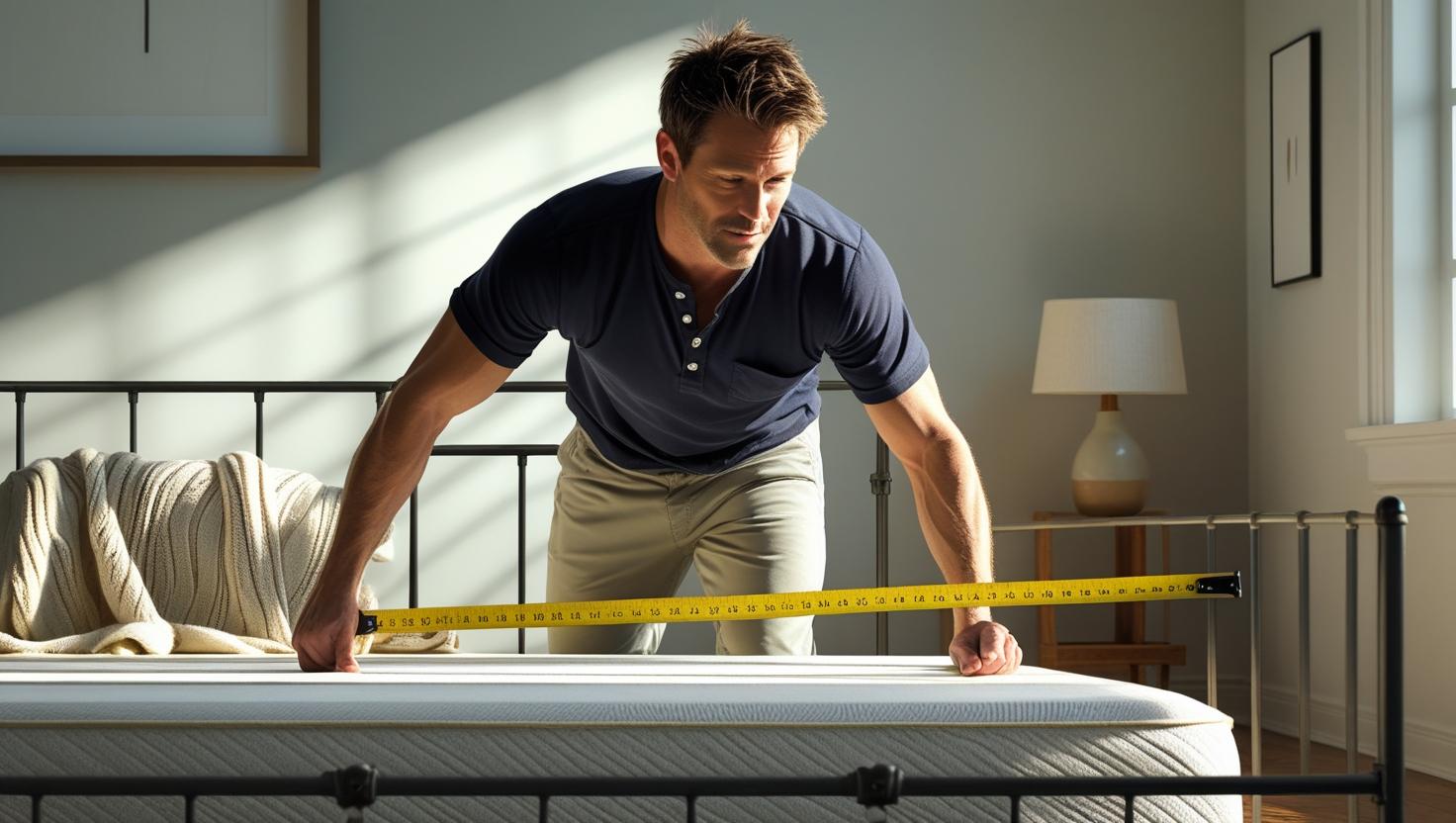
Mattress Material and Flexibility
The type of mattress material impacts how well it conforms to your bed frame. Flexible materials like memory foam adapt easily, while rigid innerspring mattresses require exact width matching.
The material of your mattress affects how well it conforms to your bed’s width. For optimal Bed Width Mattress Fit, consider both the structure and flexibility of the mattress. See Casper’s mattress size comparison guide for detailed material options.
- Memory Foam: Flexible and adaptable, great for adjustable frames.
- Innerspring: Rigid and supportive, ideal for traditional frames.
- Hybrid: A balanced combination of comfort and adaptability.
Bed Size vs. Room Space
The right bed width depends on your room size. A mattress that’s too wide for the room can make the space feel cramped, while a smaller bed can create a more balanced and open layout.
Choosing the right Bed Width Mattress Fit means considering room size for a balanced and functional layout. A bed that’s too large can make your room feel cramped. Check Amerisleep’s mattress dimensions chart for more recommendations.
| Bed Size | Recommended Room Size (ft) |
|---|---|
| Twin | 7 x 10 |
| Full | 10 x 10 |
| Queen | 10 x 12 |
| King | 12 x 12 |
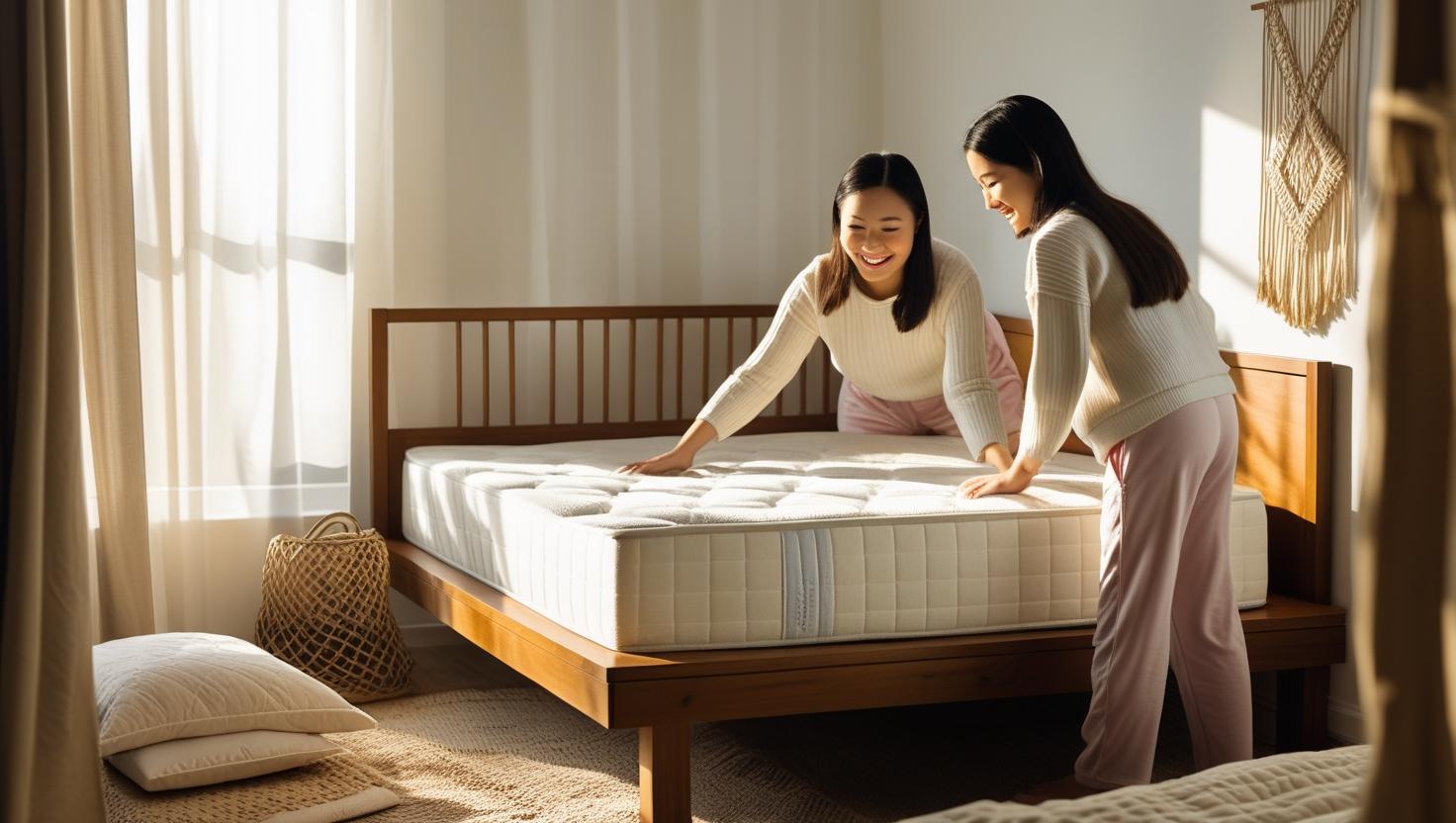
Importance of Proper Bed Width Mattress Fit
A proper Bed Width Mattress Fit improves sleep quality, reduces motion transfer, and prevents premature mattress wear. It also ensures a polished, professional look for your bedroom.
Improper Bed Width Mattress Fit leads to sagging edges, motion transfer, and discomfort. A well-fitted mattress not only enhances comfort but also supports healthy posture and extends mattress life.
- Sagging Edges: Prevent overhang for better stability.
- Motion Transfer: A snug fit reduces disturbance for couples.
- Discomfort: Avoid gaps that cause uneven support.
Measuring for Accuracy
Measuring your bed frame correctly is the first step to achieving a perfect mattress fit. Accurate measurements prevent issues like gaps, sliding, or uneven support.
Accurate measurements ensure a seamless Bed Width Mattress Fit. Always measure your bed frame and compare dimensions with the mattress manufacturer’s specs.
- Measure Frame: Internal width and length of your bed frame.
- Check Mattress Dimensions: Ensure they match standard sizes.
- Consider Bedding: Account for mattress toppers or protectors.
Additional Resources
- Choosing the Right Bed Width for Your Room
- Standard Bed Width Chart: Quick Reference Guide
- Common Bed Width Mistakes to Avoid
Expert-Recommended Reading
- How to Choose a Mattress – Sleep Foundation
- Mattress Sizes and Dimensions – Amerisleep
- Mattress Size Comparison – Casper
By focusing on Bed Width Mattress Fit, you can create a comfortable, supportive, and aesthetically pleasing sleep space. Carefully consider bed size, frame type, and room layout for the best results.
FAQ
- What is the most common bed width for couples?
- Queen size, with a width of 60 inches, is the most popular choice for couples due to its balance of space and room fit.
- Can I use a Full-size mattress on a Queen frame?
- No, a Full mattress (54 inches wide) will leave gaps on a Queen frame (60 inches wide), leading to discomfort and instability.
- How do I measure my bed frame for mattress fit?
- Use a tape measure to check the internal width, length, and depth of the frame. Compare these measurements with mattress specs.
Learn more in our complete guide to mattress types.

